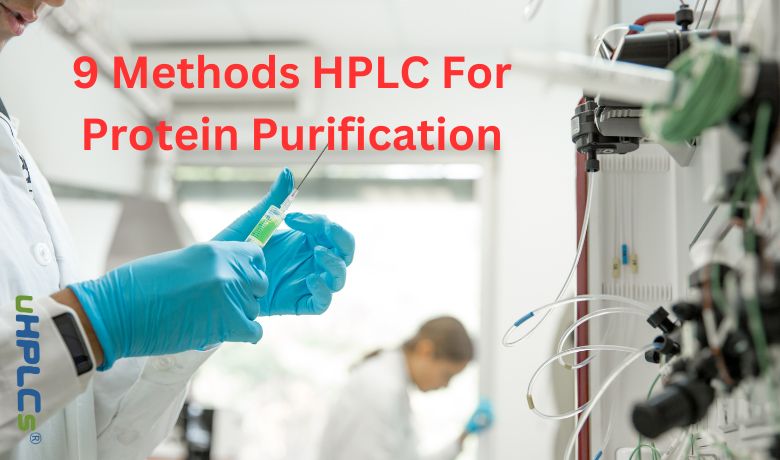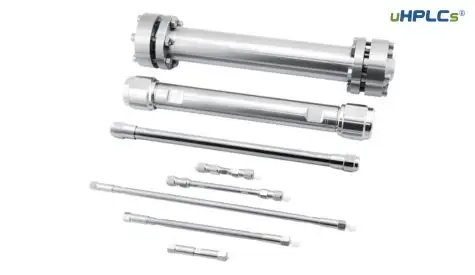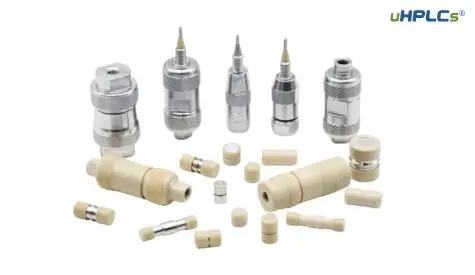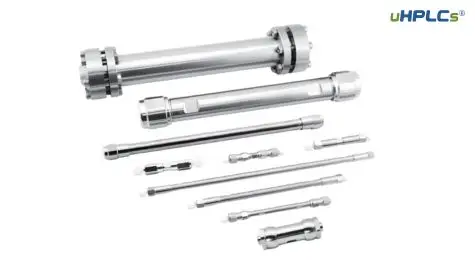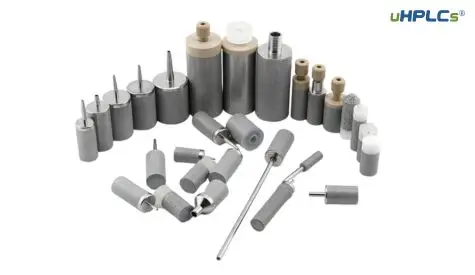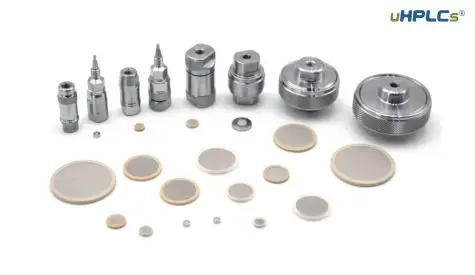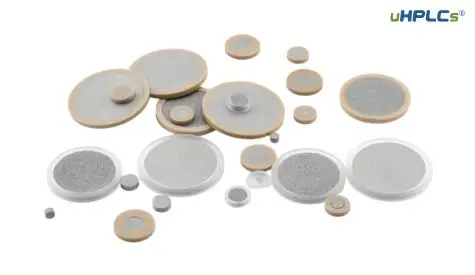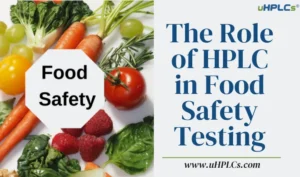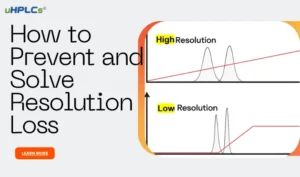Protein purification is a critical process in biochemistry and biotechnology that involves isolating a specific protein of interest from a complex mixture. High-performance liquid chromatography (HPLC) has emerged as one of the most versatile and powerful techniques for protein purification. In this article, we will explore nine different methods of using HPLC for protein purification, highlighting their principles and applications.
Basics of High-Performance Liquid Chromatography (HPLC)
High-performance liquid chromatography (HPLC) is a chromatographic technique widely used for separating and purifying complex mixtures. It relies on the differential interaction between sample components and a stationary phase within a column. The mobile phase, consisting of a solvent or a mixture of solvents, carries the sample through the column.
HPLC offers several advantages for protein purification, including high resolution, scalability, and compatibility with a wide range of sample types. The choice of HPLC method depends on the specific properties of the protein and the purification goals.
Method 1: Size-Exclusion Chromatography (SEC)
Size-exclusion chromatography, also known as gel filtration chromatography, separates proteins based on their size. In this method, a porous stationary phase is used, and larger proteins elute faster than smaller ones. SEC is particularly useful for removing contaminants, such as aggregates and proteases, and for estimating the molecular weight of proteins.
Method 2: Ion-Exchange Chromatography (IEC)
Ion-exchange chromatography separates proteins based on their charge. It utilizes a stationary phase with charged functional groups that interact with oppositely charged proteins. By adjusting the pH and ionic strength of the mobile phase, proteins can be selectively bound and eluted, allowing for their purification.
Method 3: Affinity Chromatography (AC)
Affinity chromatography exploits the specific interactions between a protein of interest and a ligand immobilized on the stationary phase. The ligand can be an antibody, a metal ion, or another molecule that binds specifically to the target protein. This method offers high specificity and can be used to purify proteins with exceptional purity.
Method 4: Hydrophobic Interaction Chromatography (HIC)
Hydrophobic interaction chromatography separates proteins based on their hydrophobicity. A hydrophobic stationary phase is used, and proteins are eluted in decreasing order of hydrophobicity by reducing the concentration of organic solvent in the mobile phase. HIC is often employed for purifying membrane proteins and protein complexes.
Method 5: Reversed-Phase Chromatography (RPC)
Reversed-phase chromatography separates proteins based on their hydrophobicity, similar to HIC. However, it utilizes a hydrophilic stationary phase and a hydrophobic mobile phase. RPC is particularly useful for separating proteins with subtle differences in hydrophobic properties and can be employed in both analytical and preparative protein purification.
Method 6: Immobilized Metal Ion Affinity Chromatography (IMAC)
Immobilized Metal Ion Affinity Chromatography is a method that exploits the affinity of certain metal ions for specific amino acid residues, such as histidine. The stationary phase is loaded with metal ions, typically nickel or cobalt, and proteins with histidine tags bind to these ions. IMAC is widely used for purifying recombinant proteins with histidine tags.
Method 7: Protein A/G Chromatography
Protein A/G chromatography is a powerful method for purifying antibodies and antibody fragments. It utilizes the strong binding affinity of protein A and protein G for the Fc region of immunoglobulins. This method offers high selectivity and can be used for both small-scale and large-scale purification of antibodies.
Method 8: Multimodal Chromatography
Multimodal chromatography combines multiple modes of interaction in a single chromatographic step. It allows for a more comprehensive separation and purification of proteins by exploiting various properties such as charge, hydrophobicity, and affinity. Multimodal chromatography is versatile and can be tailored to specific purification needs.
Method 9: Reversed-Phase Ultra-Fast Liquid Chromatography (RP-UFLC)
Reversed-phase ultra-fast liquid chromatography is an advanced technique that combines the advantages of reversed-phase chromatography with ultra-fast separation. It enables rapid protein purification with high resolution and throughput. RP-UFLC is particularly useful for high-throughput screening and purification of proteins in research and industrial settings.
Conclusion
High-performance liquid chromatography (HPLC) offers a wide range of methods for protein purification, each with its unique principles and applications. From size-exclusion chromatography to affinity chromatography and multimodal chromatography, these techniques enable researchers to isolate and purify proteins with high specificity and yield. The choice of the HPLC method depends on the specific characteristics of the protein and the purification goals.
By employing these nine methods, scientists and researchers can obtain pure protein samples for further analysis, leading to a better understanding of protein structure, function, and their role in various biological processes.
FAQs (Frequently Asked Questions)
Q1: Can HPLC be used for purifying non-protein molecules?
Yes, HPLC can be used for purifying non-protein molecules. High-performance liquid chromatography (HPLC) is a versatile technique that can separate and purify a wide range of compounds, including small molecules, peptides, nucleic acids, and carbohydrates.
The principle of HPLC relies on the differential interaction between the components of a mixture and a stationary phase within a column. The mobile phase, which consists of a solvent or a mixture of solvents, carries the sample through the column. As the sample interacts with the stationary phase, different components are separated based on their physicochemical properties such as size, charge, polarity, and affinity.
For non-protein molecules, various HPLC methods can be employed depending on their specific characteristics. For example, reversed-phase chromatography (RPC) is commonly used for separating hydrophobic compounds based on their hydrophobicity. In reversed-phase chromatography, a hydrophilic stationary phase and a hydrophobic mobile phase are utilized. The non-polar molecules interact more strongly with the hydrophobic stationary phase, leading to their separation from other components in the mixture.
Other HPLC methods, such as normal-phase chromatography, ion-exchange chromatography, and affinity chromatography, can also be utilized for purifying non-protein molecules based on their properties. The choice of the HPLC method depends on the specific characteristics of the molecules and the purification goals.
In summary, HPLC is a powerful tool for purifying both protein and non-protein molecules. Its versatility, high resolution, and compatibility with various sample types make it an essential technique in analytical and preparative chemistry, pharmaceutical research, and other fields where purification of complex mixtures is required.
Q2: Is HPLC suitable for large-scale protein purification?
Yes, HPLC is suitable for large-scale protein purification. High-performance liquid chromatography (HPLC) can be scaled up to accommodate larger sample volumes, making it a viable option for industrial-scale protein purification.
When performing large-scale protein purification using HPLC, several factors need to be considered. These include the choice of column size, flow rate, and the capacity of the chromatography system. Large-scale HPLC systems are designed to handle larger volumes of sample and can accommodate higher flow rates, allowing for efficient separation and purification of proteins.
The scalability of HPLC makes it an attractive option for industrial applications where large quantities of purified proteins are required. Pharmaceutical companies, biotechnology firms, and research laboratories often rely on HPLC-based purification processes to obtain pure proteins for various applications, including therapeutic development, diagnostics, and biochemical studies.
It is important to note that large-scale HPLC systems may require specialized equipment and larger quantities of consumables, such as columns and solvents. Additionally, process optimization and careful monitoring of parameters such as pressure, temperature, and sample concentration are crucial for successful large-scale protein purification using HPLC.
In conclusion, HPLC can be effectively utilized for large-scale protein purification, providing a reliable and efficient method for obtaining purified proteins in significant quantities. Its scalability and versatility make it a valuable tool in industrial settings where large volumes of pure proteins are required.
Q3: What factors should I consider when choosing an HPLC method for protein purification?
Protein Properties: Consider the specific characteristics of the protein, such as size, charge, hydrophobicity, and affinity to specific ligands. Different HPLC methods exploit these properties for separation and purification.
Purity Requirements: Determine the desired level of purity for the purified protein. Some methods offer higher selectivity and purity than others. Consider the level of contaminants or impurities that need to be removed.
Yield: Assess the desired yield of the purified protein. Some methods may result in higher yields but with potentially lower purity, while others may provide higher purity but with lower yields. Find a balance that suits the purification goals.
Sample Complexity: Evaluate the complexity of the sample matrix containing the protein of interest. Some methods are more suitable for complex mixtures, while others work well with relatively simple sample matrices.
Compatibility: Consider the compatibility of the chosen method with the protein’s stability and integrity. Certain methods may require specific buffer conditions or may subject the protein to harsh conditions, which could affect its structure or function.
Scalability: If large-scale protein purification is required, consider the scalability of the HPLC method. Ensure that the method can be effectively scaled up to accommodate larger sample volumes and provide consistent results.
Equipment and Resources: Assess the availability of the necessary equipment, columns, solvents, and other resources required for the chosen HPLC method. Consider the cost-effectiveness and practicality of implementing the method within the available resources.
Expertise and Experience: Take into account the expertise and experience of the individuals involved in the purification process. Some methods may require specialized knowledge and technical skills for successful implementation.
By carefully considering these factors, you can select the most suitable HPLC method for protein purification, ensuring optimal results in terms of purity, yield, and efficiency. It is often beneficial to consult with experts or refer to literature and established protocols to guide the decision-making process.
Q4: Are there any drawbacks or limitations to using HPLC for protein purification?
While high-performance liquid chromatography (HPLC) is a powerful technique for protein purification, there are certain drawbacks and limitations that should be considered:
Time-consuming: HPLC purification can be a time-consuming process, especially when dealing with complex protein mixtures. The separation and elution of proteins can take a significant amount of time, which can impact the overall purification timeline.
Equipment and Resources: HPLC purification requires specialized equipment, including HPLC systems, columns, detectors, and other accessories. Acquiring and maintaining this equipment can be costly, especially for smaller research laboratories with limited resources.
Sample Load: HPLC systems have specific limitations on the maximum sample load they can handle. Purifying large quantities of proteins may require multiple runs or the use of larger-scale purification systems, which can add complexity and time to the process.
Sample Stability: Some proteins may be sensitive to the conditions required for HPLC separation, such as high pressures, organic solvents, or extreme pH values. It is crucial to ensure that the chosen HPLC method does not compromise the stability or integrity of the protein of interest.
Optimization Challenges: Achieving optimal separation and purification conditions using HPLC can be challenging. The selection of appropriate stationary phases, mobile phases, and gradient conditions may require extensive method development and optimization for each specific protein.
Sample Matrix Interference: The presence of complex sample matrices, such as cell lysates or crude extracts, can pose challenges during HPLC purification. Matrix components, such as salts, nucleic acids, or lipids, may interfere with the separation process or interact with the stationary phase, affecting the purity and yield of the purified protein.
Cost: HPLC purification, particularly with larger-scale systems, can be expensive due to the costs associated with equipment, columns, solvents, and maintenance. The cost-effectiveness of HPLC purification should be considered, especially for projects with budget constraints.
Despite these limitations, HPLC remains a widely used and effective technique for protein purification. By understanding these drawbacks and limitations, researchers can plan and optimize their purification strategies accordingly, ensuring successful protein purification while mitigating potential challenges.

